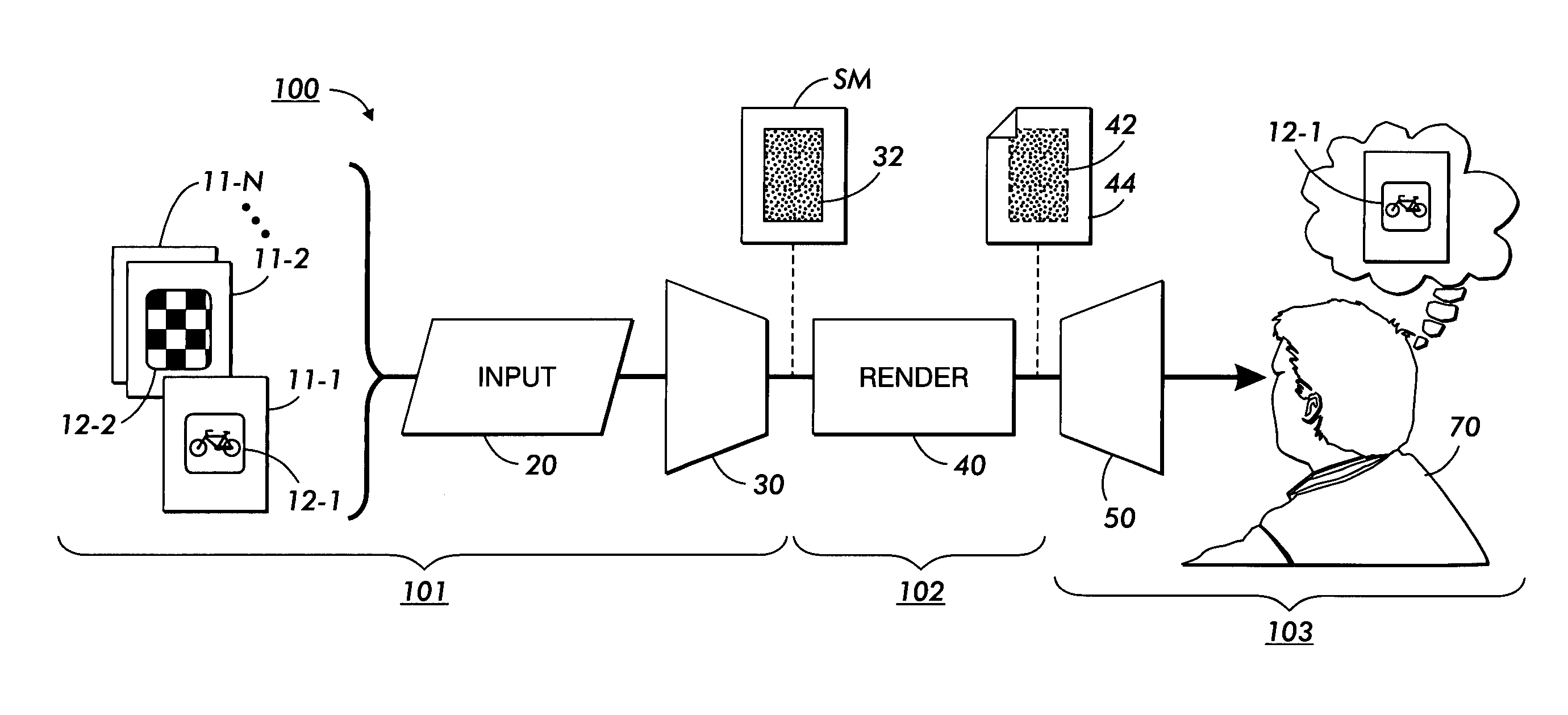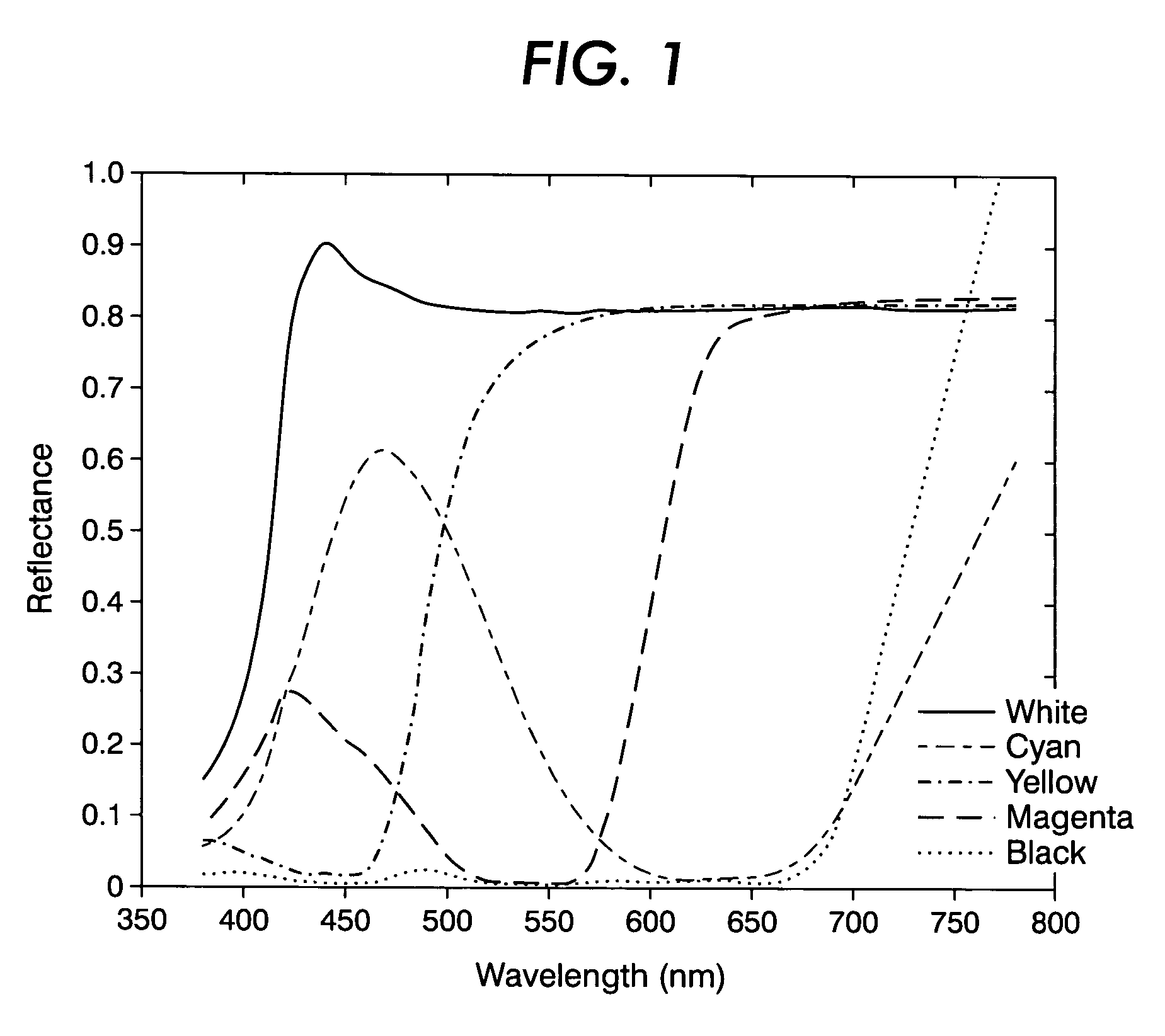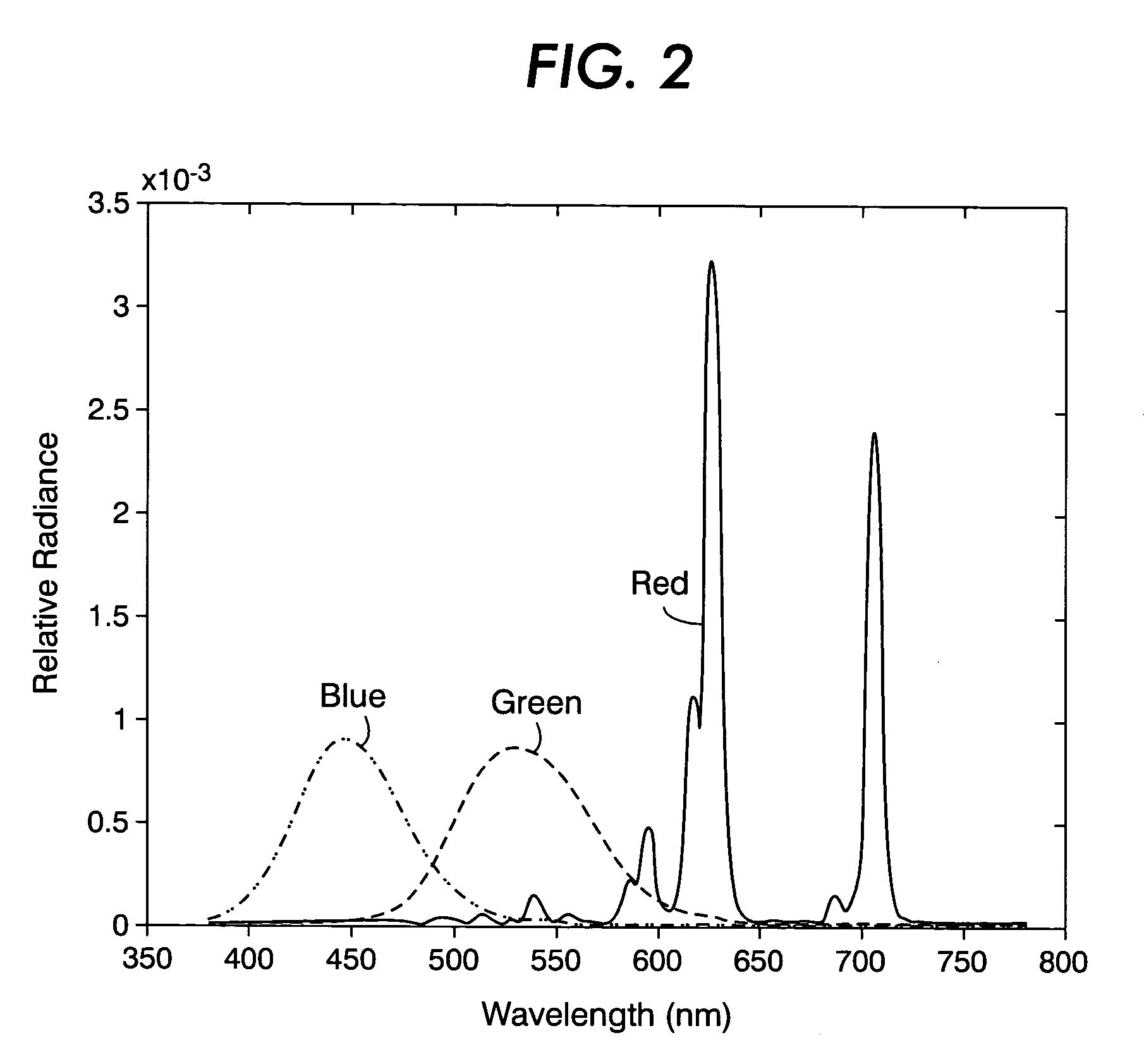Illuminant-neutral gray component replacement in systems for spectral multiplexing of source images to provide a composite image, for rendering the composite image, and for spectral demultiplexing of the composite image
a technology of source image and component, applied in image data processing, instrumentation, electromagnetic radiation sensing, etc., can solve problems such as confusion of original image perception, and achieve the effect of increasing the dynamic range of images recovered
- Summary
- Abstract
- Description
- Claims
- Application Information
AI Technical Summary
Benefits of technology
Problems solved by technology
Method used
Image
Examples
example 1
Illuminant-neutral GCR as Applied to C / Y Encoded Images
[0208]FIG. 9 is a rendered composite image wherein two source images are encoded and rendered in cyan and yellow colorants that are respectively designed for viewing under red and blue illumination. The rendered composite image incorporates a small amount of black (K) to compensate for unwanted absorptions by cyan (C) (so as to make the cyan image less than discernible under illumination in the blue region and to recover the source image in the presence of a yellow illuminant). The use of K greatly increases the dynamic range available for encoding the source images. Note that when this rendered composite image is viewed under white light, the image in cyan (C) dominates the other confused images and the source image encoded in yellow (Y) is hardly visible.
[0209]FIG. 10 is a rendered composite image created with a 80% GCR fraction, wherein the appearance of the rendered composite image under red and blue illumination is substant...
example 2
Use of Spatially-varying Illuminant-neutral GCR for Encoding an Additional Source Image
[0211]FIG. 12 is a composite image having encoded therein first and second source images intended for recovery under blue and red illumination wherein illuminant-neutral GCR has been utilized in the rendering of the composite image in cyan and yellow colorants, and having a third source image encoded therein for recovery under white light illumination. The amount of illuminant-neutral GCR is spatially varied in accordance with the image content of the third source image. In the rendered composite image of FIG. 12, the image content of the third source image is a binary pattern in the shape of the “digital X” (a trademark of Xerox Corporation), with use of a M-based GCR in the regions of the composite image that correspond to the image content of the third source image, and no GCR being implemented in the remaining regions of the composite image. When the image is subjected to red or blue light, a ...
example 3
Varying Illuminant-neutral GCR for Optimized Confusion
[0214]FIG. 13 is a rendered composite image that exemplifies an additional application of the contemplated illuminant-neutral GCR technique, wherein the M-based GCR was applied over the randomly-positioned square blocks of pixels. Note that the resulting rendered composite image will reveal the encoded source images under illumination by red and blue illuminants but image confusion is evident in the rendered composite image when subjected to white light. The level of image confusion may be further optimized by choosing the image alignments with respect to the particular application of the illuminant-neutral GCR technique. The image confusion may be increased when the frequency content of the illuminant-neutral GCR matches that of the dominant image and the dark regions in the two encoded images align so as to allow a selected amount of variation in illuminant-neutral GCR.
PUM
 Login to View More
Login to View More Abstract
Description
Claims
Application Information
 Login to View More
Login to View More - R&D
- Intellectual Property
- Life Sciences
- Materials
- Tech Scout
- Unparalleled Data Quality
- Higher Quality Content
- 60% Fewer Hallucinations
Browse by: Latest US Patents, China's latest patents, Technical Efficacy Thesaurus, Application Domain, Technology Topic, Popular Technical Reports.
© 2025 PatSnap. All rights reserved.Legal|Privacy policy|Modern Slavery Act Transparency Statement|Sitemap|About US| Contact US: help@patsnap.com



